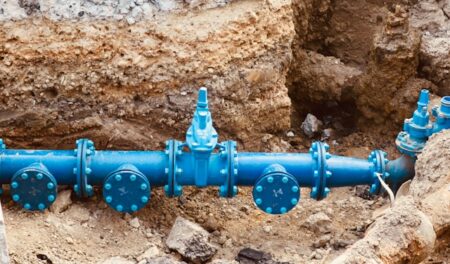Shower pumps can be an excellent addition to your home, providing enhanced water pressure for a more enjoyable shower experience. However, questions often arise about their installation, operation, and maintenance. Here is how to address some common concerns, and some tips for ensuring your shower pump works efficiently.
Installation concerns
There is no point spending hours finding the best deal on a new shower pump if it means installing it in a hurry and having it die the first time you use it. So, when planning to install a shower pump, there are several key factors to consider, as it’s essential to ensure that the device is properly placed and connected to avoid potential complications down the line:
- Space limitations: Limited space can pose a challenge when installing a shower pump. It’s essential to place the unit in an area where it is accessible but not cramped. Ensure hoses are connected straight and stress-free to prevent damage and possible flooding.
- Avoiding water freeze: Locating your shower pump in an environment where it may freeze during cold weather is not advisable. Proper ventilation is vital as it ensures the electrical components do not overheat, while simultaneously protecting from freezing temperatures which could cause serious damage.
- Electrical safety: Ensuring that the electrical connections are secure and in compliance with local codes is determining. It’s advisable to have a certified electrician verify that all wiring is properly insulated and away from water sources to prevent any electrical hazards.
- Check for compatibility with existing plumbing: Before installing a new shower pump, it’s important to ensure that it is compatible with your home’s existing plumbing system. This includes checking the type of pipes used, their size, and whether your system is vented or unvented. Compatibility issues can lead to poor performance or even damage to the pump and plumbing.
Troubleshooting common issues
After installation, you might encounter various issues with your shower pump. Here’s how to handle some of the most frequent problems:
- Pump activation issues: If your installed shower pump is not activating correctly, the lack of adequate head pressure may be the culprit. Ensuring your system has the required head pressure is critical for proper pump function. Often, adjusting the height or positioning of your water tank can help resolve this issue.
- Noisy operation: A shower pump getting noisier over time can indicate air entering the system. To diagnose this, place tubing within the system’s water supply while running the shower. Observations here can help pinpoint air leaks or other causes of increased noise levels.
- Handling multiple showers: For homes with multiple showers, it’s necessary to choose a pump capable of handling simultaneous use. Consideration of possible pressure differences is also essential for maintaining consistent performance across all shower units.
- Intermittent Pump Cycling: If your shower pump starts and stops intermittently, it might be due to a leak in the system or a faulty non-return valve. Checking all connections for leaks and ensuring that non-return valves are functioning properly can help resolve this issue, stabilizing the pump’s operation.
Maintenance tips
Regular maintenance is fundamental for prolonging the life of your shower pump and ensuring continuous operation without faults. Follow these essential maintenance tips:
- Balancing hot and cold sources: Remember that shower pumps draw from both cold and hot water sources. Balancing these inputs is key to efficient pump operation. This is particularly important to maintain correct temperature and pressure settings, ensuring optimal performance.
- Consider household size: The size of your cold water tank should match your household needs. A tank that’s too large or small can complicate the functionality of your shower pump, potentially leading to inconsistent pressure or temperature variations.
- Protecting valves and cisterns: While it might seem practical to connect various utilities to the water circuit supplied by your shower pump, it’s important to note that doing so can damage valve systems. For instance, connecting a toilet cistern to your shower pump can lead to malfunction or flooding due to the high flow rate of the pump.
- Regular Cleaning of Filters: Many shower pumps have pre-filters to catch debris and prevent clogs. Regular cleaning of these filters is essential to maintain optimal water flow and prevent strain on the pump. Make it a routine to check and clean these filters every few months or more frequently if you notice a decrease in water pressure.
If you pay attention to proper installation practices and keep with regular maintenance, you can ensure your shower pump remains reliable and efficient. Should further issues arise, don’t hesitate to contact a professional for advice or assistance.






